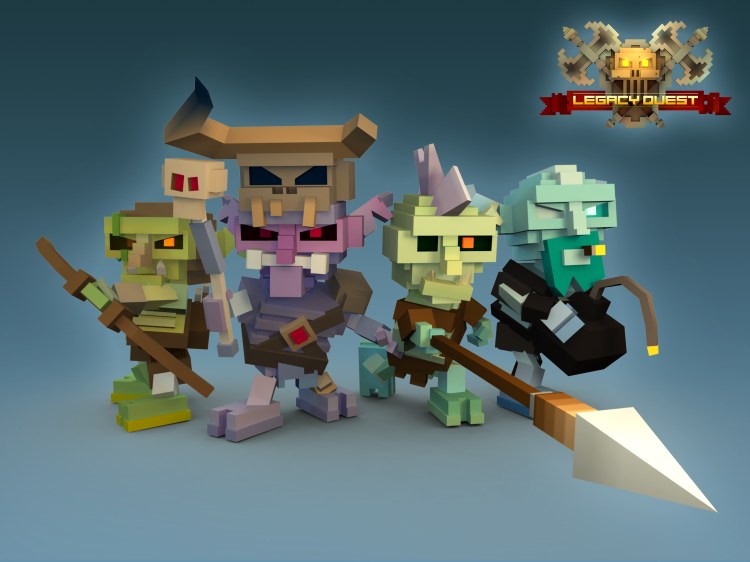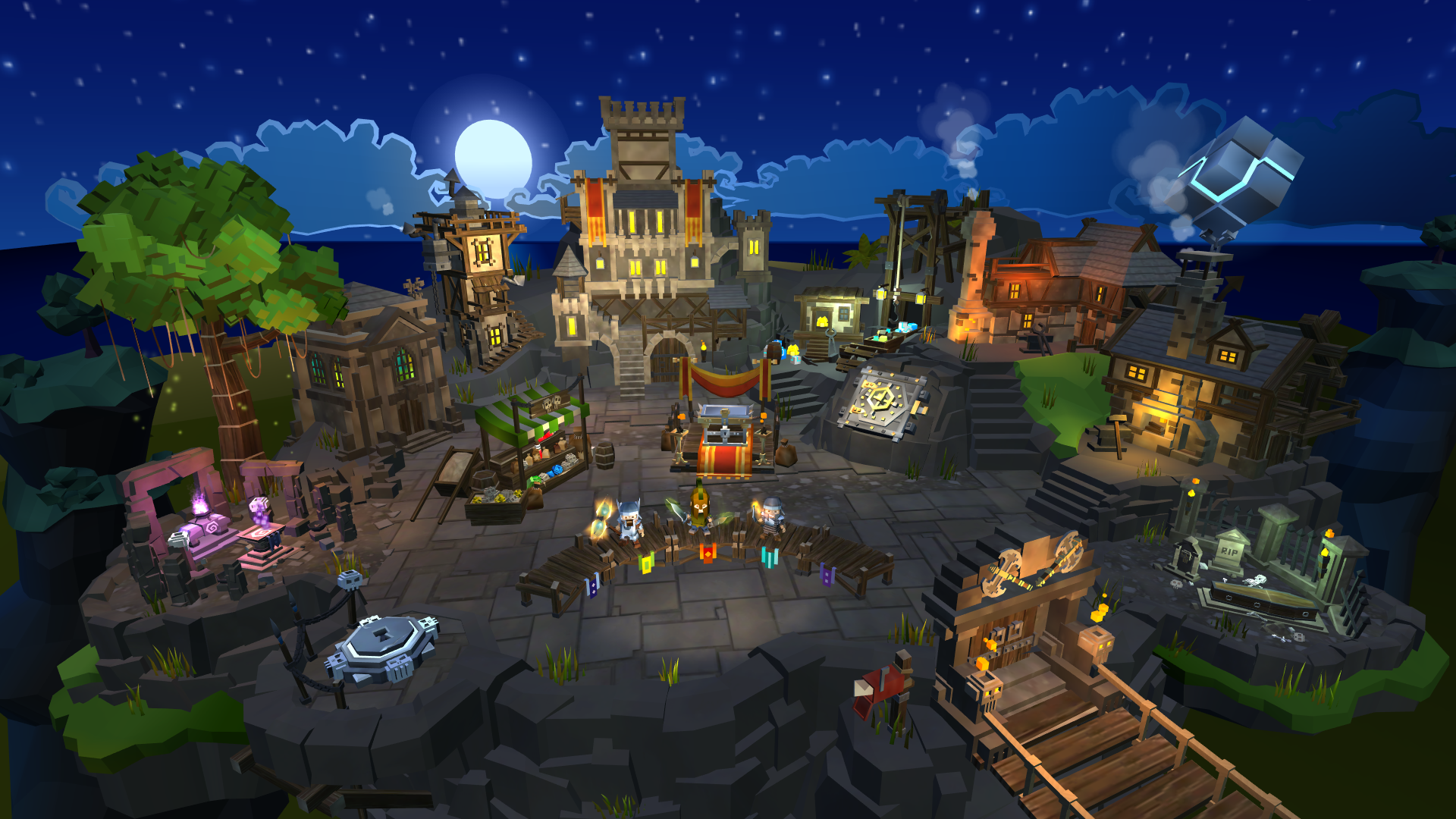Living loot and creative crafting
Just as in most other role-playing games, the player collects treasure after felling monsters. Legacy Quest is unique in that another player likely created the loot created — and that it lives on in a way.
“Like most looting games, items get created and they drop,” says Hutterer. “What’s different in Legacy Quest is that all the items you can craft and equip your character with, if your hero dies, those [items] get added to the loot system of the dungeon. So you can actually lose gear you created and then it can be found by another player later in the game.
“We keep track of the history of those items. You can find a sword, for example, which I crafted, and my username is imprinted on the item basically for forever. And then you find it and play with it for a while and you might lose it at some point. It creates almost like a story for the item. We are looking at building a set of interesting features around that mechanic.”
The crafting system provides for the customization of a player’s equipment, and they can trade their creations with friends. It’s a deep system that mixes the more traditional recipe-based resource crafting with alchemy, which provides for the modification of new and existing items. Socialspiel wanted to create a crafting system worthy of legendary weapons.
“If you look at classic fantasy literature or lore, usually the weapon of the hero is something very, very special, says Hutterer. “They usually have their own history. That’s something we felt hadn’t been explored in a game, at least that we know of.”
Building blocks
Legacy Quest’s distinctive look comes from a mix of inspiration and necessity. The heroes, monsters, and dungeons of the world are made up of chunky blocks, giving it a distinct art style that is more detailed and varied than Minecraft. Hutterer explains that it all started from an imaginative viewpoint.
“We had this idea: What if a serious fantasy character, say, Conan the Barbarian, turns into a kids toy but doesn’t know it? That was the starting point,” he said. “So we have this world of heroes and monsters and for them, that’s their world and it’s completely normal, and they’re all kind of serious about it. And then there’s the player that has a completely different view on the game world. That’s kind of interesting and we play a little bit with that. ”
The blocky look has the side benefit of being easier to build with, Hutterer explains. “We are a small studio, and we had to create a style which allows us to create lots and lots of content fast. So basically we married the necessity of creating lots of content fast and the interesting angle of looking at the game. We did lots of tests and spent a lot of time getting the style right. It looks unique in a certain way, but also something familiar and not stage.”
The blocks used in Legacy Quest look like overgrown pixels. This came from an effort to look something like an older video game.
“One of the ideas we also had was transforming an old-school 8-bit game into something more modern and 3D. This is something you can also find in the soundtrack of the game, which has a little bit of a retro vibe to it, but still feels very modern also,” Hutterer said.
Worldwide launch
Nexon M plans for a worldwide launch of Legacy Quest this summer. In the meantime, the company will open up an email list starting Feb. 25 to let about 100 players into an early access beta release of the game.
VentureBeat's mission is to be a digital town square for technical decision-makers to gain knowledge about transformative enterprise technology and transact. Learn More


